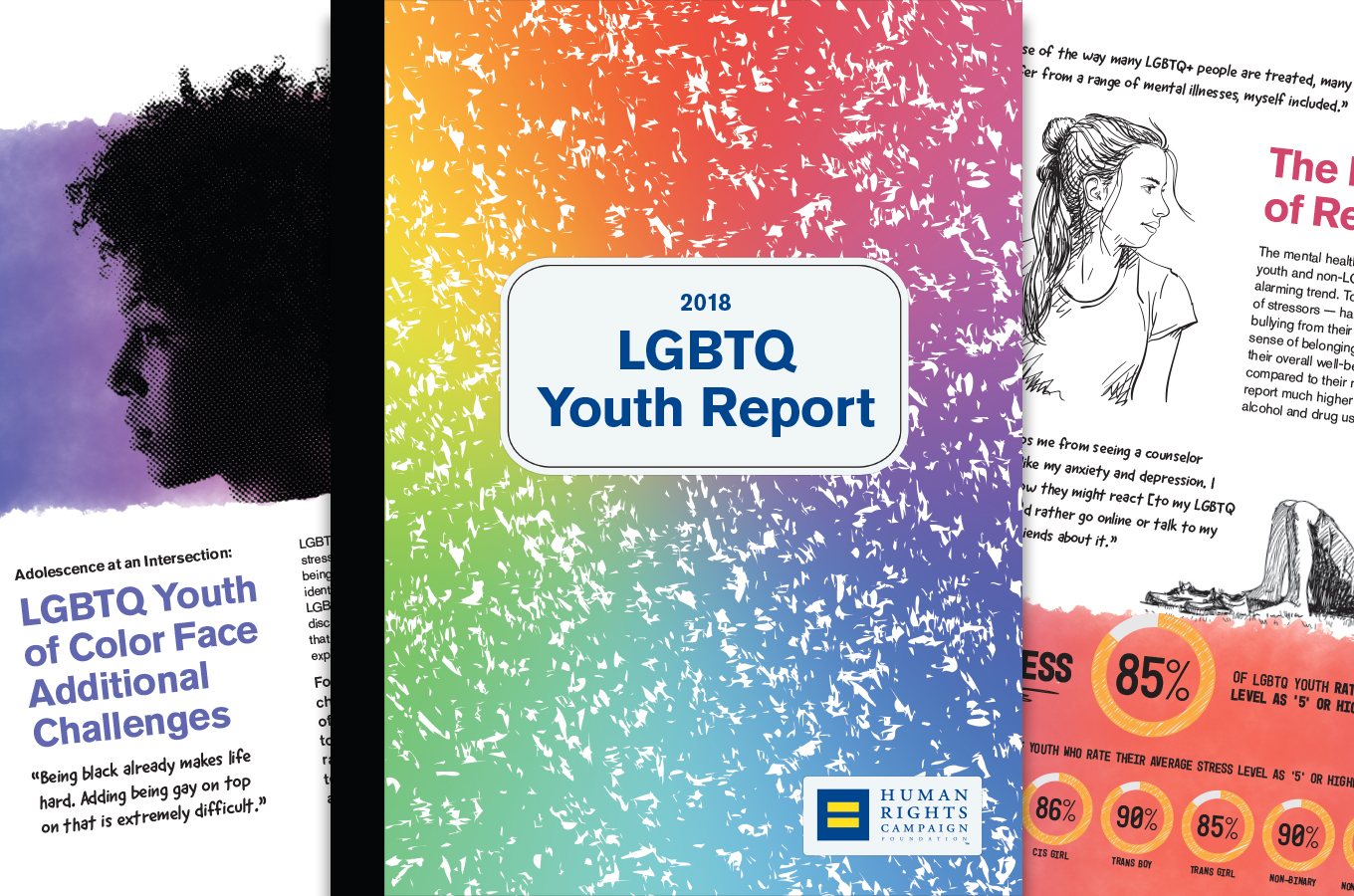
The Human Rights Campaign (HRC) is the largest LGBTQ civil rights and advocacy organization in the United States.
In 2017, HRC, in partnership with researchers at the University of Connecticut, deployed a comprehensive survey to capture the experiences of LGBTQ youth in their family settings, schools, social circles and communities. Over 12,000 youth ages 13-17 across all 50 states and the District of Columbia participated in the survey, making it the largest ever of its kind.
Dialectic was asked to partner with HRC to help make sense of the overwhelming responses and translate the data into a report that advocates can use to inform policy recommendations for government agencies, educators, and other youth-serving professionals.
Typical design agencies develop reports in a linear fashion: A subject matter expert researches and writes a draft of the report. It is then passed along to graphic designers who lay out and design the final report, adding elements of visual interest. So you get information wrapped in a pretty package, but miss a big opportunity to help the user interact with and absorb the information to encourage the behaviour-changing outcomes you want.
With such a large data set on this project, we didn’t want the real meaning to get lost. It was important that the information we included in the report faithfully illustrated the striking story that the youth respondents were telling us.
Given HRC’s outreach goals, target audience and specific use-case for the report, our team quickly identified that working in isolated research, writing, and design silos was not going to get it done. Instead, we knew we had to apply an integrated approach.
It was clear to our researchers that the statistics told a compelling story – one that needed an innovative structure to be revealed. The integrated approach immediately reframed the way we thought about the data. By incorporating our designers at every step, we inverted the typical report development process.
The overarching visual concepts were driven by this story. The emotion and diaristic vulnerability of the responses was the key. Our visual language had to invite the reader to enter the ‘private world’ of the LGBTQ youth.
Instead of hanging the text from the statistics, we treated the project more like a film or graphic novel – storyboarding each page visually first. This approach emphasized the emotion behind the numbers and allowed us to apply a lighter touch when writing the copy.
Our integrated process delivered a resource that exceeded our clients’ goals. First and foremost, it’s an actionable resource for advocates of all experience levels. Second, it centres the needs and experiences of LGBTQ youth in their own words, letting them speak directly to change makers. Finally, we delivered an asset that aligns the organizational structure, copy, visual language and statistics to the narrative borne out by the survey responses.
Perhaps more important is how this project has changed our approach to creating public education assets. Moreover, this new approach now informs every project we partner on with HRC and other clients.

Dialectic helps organizations improve the way people work, learn, and collaborate through person-centred design and the latest in social science.

Does your team struggle with soft skills?
Use our app or upload Snippets to your LMS to build better habits in minutes with scenario-based microlearning.
Sign up for our weekly roundup of the latest on DEI, leadership, collaboration, and learning science.
© 2024 Dialectic. All rights reserved. | Contact Us | Privacy Policy | Terms of Use | AODA Statement
See how easy it is to activate soft skills in your organization. Soft skills training on 3 key topics: DEI, Leadership, and Collaboration.